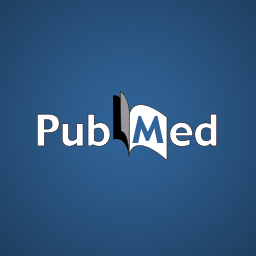
J Clin Med. 2018 Oct 24;7(11). pii: E379. doi: 10.3390/jcm7110379.
Association of Pelvic Inflammatory Disease with Risk of Endometriosis: A Nationwide Cohort Study Involving 141,460 Individuals.
Tai FW1, Chang CY2,3, Chiang JH4, Lin WC5,6, Wan L7,8.
Author information
- 1
- School of Chinese Medicine, China Medical University, Taichung 40402, Taiwan. u102022306@cmu.edu.tw.
- 2
- Department of Obstetrics and Gynecology, China Medical University Hospital, Taichung 40447, Taiwan. changyinyi@hotmail.com.
- 3
- School of Medicine, China Medical University, Taichung 40402, Taiwan. changyinyi@hotmail.com.
- 4
- Management Office for Health Data, China Medical University Hospital, Taichung 40447, Taiwan. zinvii@gmail.com.
- 5
- School of Chinese Medicine, China Medical University, Taichung 40402, Taiwan. sun.bau@msa.hinet.net.
- 6
- Department of Obstetrics and Gynecology, China Medical University Hospital, Taichung 40447, Taiwan. sun.bau@msa.hinet.net.
- 7
- School of Chinese Medicine, China Medical University, Taichung 40402, Taiwan. leiwan@mail.cmu.edu.tw.
- 8
- Department of Biotechnology, Asia University, Taichung 41354, Taiwan. leiwan@mail.cmu.edu.tw.
Abstract
Endometriosis occurs when endometrial tissue exists outside the uterine cavity. The presence of ectopic endometrial tissue and resultant inflammation cause serious symptoms, including chronic pelvic pain, dysmenorrhea, dyspareunia, and infertility. Pelvic inflammatory disease is caused by the ascension of pathogenic bacteria from the vagina to the uterus, Fallopian tubes, and ovaries. The factors involved in the pathogenesis of the two conditions are not clearly understood, but recent studies have suggested that disturbances of the female reproductive tract microbiota and inflammatory processes influence the development of both diseases. Using data from the National Health Insurance Research Database (NHIRD), we conducted a study to assess the association of pelvic inflammatory disease (PID) with endometriosis. An age-matched control group including patients without PID was selected. Patients with a pre-existing diagnosis of endometriosis were excluded. This nationwide retrospective cohort study, involving a total of 141,460 patients, demonstrated that patients with PID had a three-fold increase in the risk of developing endometriosis (HR = 3.02, 95% CI = 2.85⁻3.2).
KEYWORDS:
endometriosis; inflammation; pelvic inflammatory disease; reproductive tract microbiota; upper genital tract infection
- PMID:
- 30352985
- DOI:
- 10.3390/jcm7110379
Dr. K’s Comment:
Beware! This is a very misleading article.
1. Patients were selected based on insurance claims data and not specific diagnostic criteria for PID. We all know that women with endo are often misdiagnosed for having PID (and along with it the stigma related to PID). 2. The demographic data between women with PID and women without PID are very different. Specifically women with PID are more likely to have infertility, fibroids, autoimmune diseases, allergic diseases, cancer and breast cancer. This raises the question – Are women with PID truly more likely to have endo or is it because of the presence of other factors?
This article is poorly done and no conclusion can be drawn. So, NO, women with PID do not have an increased risk of developing endometriosis. Endo is not a lifestyle disease. Women do not choose to have endo.
This is an open access article (i.e. open to the public). You can access it here. https://www.mdpi.com/2077-0383/7/11/379/htm
